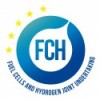Introduction
The large-scale deployment of wind power and solar energy sources will strongly contribute to the implementation of Europe’s energy policies objectives, i.e. to produce 65% of electricity from renewable energy sources by 2050 and to reduce CO2 emissions linked to energy production by 50%.
However, wind power and solar energy resources are characterised by intermittent behaviour and their fluctuations affect the stability and reliability of the electrical grid. Consequently, there is a strong need for rapid-response, costeffective and scalable energy storage systems capable of absorbing the electrical power exceeding the capacity of a transport and distribution line. This will considerably reduce the investments needed to build a new grid infrastructure.
Hydrogen produced from water electrolysis can play a significant role as energy storage medium. Electrolysis can support the electricity grid in terms of power quality, frequency and voltage control, peak shaving, load shifting and demand response. However, current electrolysers, especially those based on alkaline systems, are characterised by poor dynamic behaviour, are designed to reach suitable efficiency at their operating design point, at typically close to 100% load, and to run continuously. This means that to provide grid services, future electrolysers should be capable to handle frequent start-stop and dynamic operations and need to be highly efficient across much of the load curve.
High efficiency is required also under operating conditions largely exceeding the nominal load. Future electrolysers have to follow the variable energy generation profile of renewable power sources locally available and have to adapt to the intermittent profile of electricity supply.



